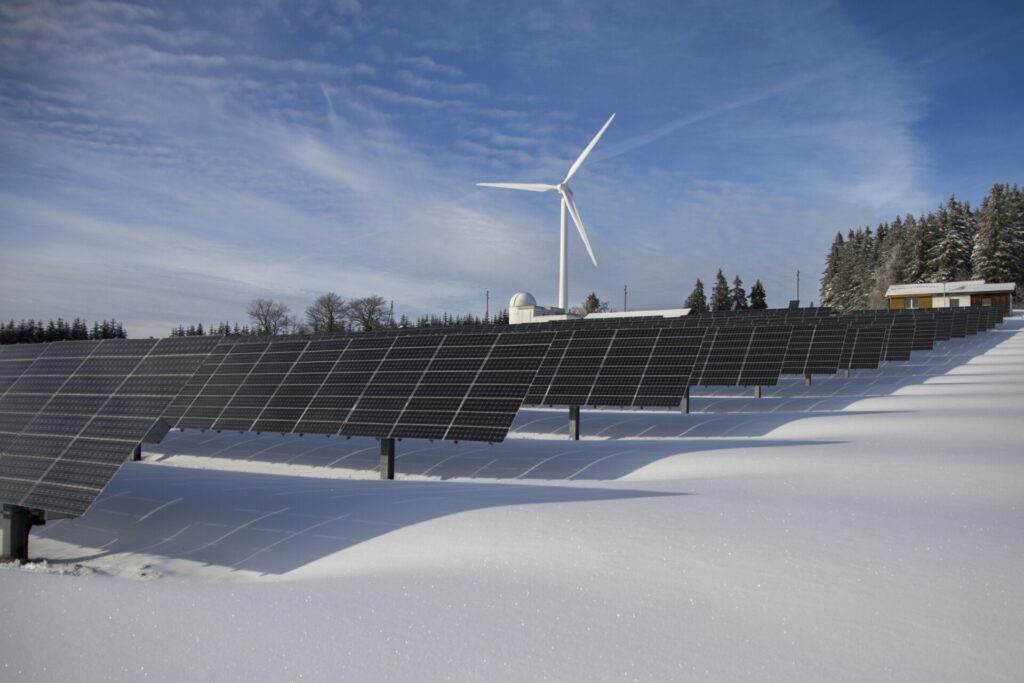Where and how does the UK generate it’s electricity? Is it all renewables? Or still mostly fossil fuels? Here we will explore the latest official figures.
In recent times it’s become apparent that the UK’s Energy Security has been under threat, largely due to how reliant we still remain on natural gas imports, especially when it concerns the generation of our electricity supply.
So what is our current energy mix? Here we cover the latest statistics and future projections…
UK Electricity Generation Sources Breakdown:
As of 2024, the most recent data from the National Grid (released in 2022) indicated that zero carbon sources generated around 50% of the electricity produced in the UK; this has increased from a meagre 20% back in 2010.

Renewable Electricity Sources – 43%
Since 2010, the UK’s electricity generation from renewables has continued to grow, from just 20% back in 2010, to 42.8% in 2021.
May 2022 holds the record for the maximum amount of wind power generation ever in the UK, at 19.9 Gigawatts (GW).
Renewable fuel sources include a combination of wind, wave, marine, hydro, biomass and solar.
Nuclear Energy Electricity Generation – 16%
Nuclear power has it’s own controversies, but it’s still important to highlight that it is a zero carbon form of electricity production.
Currently, nuclear energy accounts for around 16% of the UK’s electricity generation.
Fossil Fuel Electricity Generation – 35%
Electricity generated via the burning or combustion of fossil fuels stood at around 35% in 2021 (according to the National Grid).
This includes the burning of high carbon emitting fuels like natural gas, oil and LPG.
However, the good news is that electricity production via fossil fuels was down to roughly 35% in 2021 compared with over 75% in 2010.
Additionally, zero-carbon generation overtook fossil fuel consumption in 11 months of the year in 2021 reaching 85% (wind 39%, solar 25%, nuclear 20% and hydro 1%).
Imported Energy & Electricity Sources
The UK also imports electricity from neighbouring countries, including France, Ireland and the Netherlands.
These countries are able to supply the UK with electricity they have generated via cables referred to as interconnectors.
In fact, a recent fire at the French interconnector last year was partly responsible for increasing energy prices in the UK.
For illustration, according to Statistica in 2021, France exported 19.7 terawatt hours of electricity to the United Kingdom. While, France imported 5.8 terawatt hours of electricity from the UK.
This is a mutually beneficial relationship, allowing each country to cover the others shortfall in times of need.
Future Projections for UK Electricity Generation
The UK government aim to completely eliminate carbon emissions and achieve net zero by 2050.
The latest Energy Security strategy released in April also makes it very clear that the ultimate aim of the UK government is to achieve a carbon neutral or net zero economy.
However, it also makes it clear that in the short term both oil and gas security are essential to take us through the low carbon transition.
The strategy outlines exactly how the UK government intends to transition our energy production to zero-carbon over the coming decades.
For example, the strategy aims to increase UK energy production via wind power to 50 gigawatt by the year 2030.
10% of these will be in the form of large floating turbines that can be located far off the coat of the UK.
You can read the aims of the strategy and intended timelines here.
Sources:
1. https://www.statista.com/statistics/1263867/french-and-uk-electricity-trade/
2. https://www.nationalgrid.com/stories/energy-explained/how-much-uks-energy-renewable
3. https://www.gov.uk/government/organisations/department-for-business-energy-and-industrial-strategy/about/statistics